
Progressive die stamping is the most popular stamping method. As a professional sheet metal manufacturer, Shanghai Yixing provides progressive die stamping parts with premium accuracy in large quantities. We can also export progressive die abroad.
Progressive die stamping is a technique where a press machine uses a series of workstations to simultaneously perform multiple stamping processes on strip material in one stroke, moving the strip a set distance with each press until the part is complete, efficiently shaping metal plates into desired forms using an automatic feed system. Whether to use compound die stamping or progressive die stamping for your parts depends on their size, complexity, and quantity; progressive die stamping is ideal for producing numerous small parts cost-effectively, offering high productivity and precision for parts with material thicknesses ranging from 0.1 to 3.0 millimeters.


Progressive die stamping uses various metals and alloys to produce high-performance parts with extraordinary precision and repeatability. When selecting metal materials for stamping parts, it is important to consider their compatibility with the metal stamping process and your application.
Below is the short summary of the progressive die stamping material you can choose from:
| Material | Grade |
| Carbon steel | S235, S345, SPCC, SPEC, CRS, HRS, DC01, SAPH440 etc |
| Aluminum alloys | AL5052, AL5754,AL6061, AL6063, AL1060 etc |
| Stainless steel | SS201,SS304,SS316, etc |
| Copper | C10100,C11000,C12200,GB/T1, T2,T3 etc |
| Brass | C27200,C36000,C37700,H63, HPb63-3, HPb59-1 etc |
| Cold or hot dip galvanized sheet | SGCC, SECC etc |
| ZINCALUME steel | DC01+AZ150 |
| Titanium/Tin/Spring steel/Manganese steel etc | / |
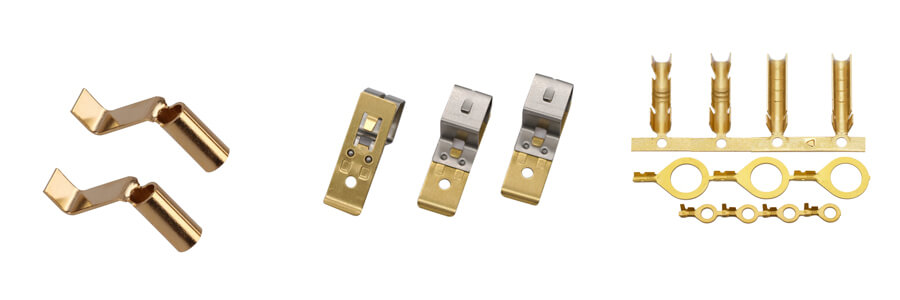


At Shanghai Yixing Technology Company, progressive stamping is not just one of our many different capabilities. This is an ability that we are proud of and excel in. Our progressive dies have been exported to countries such as the United States, Canada, and Europe.

Our progressive die process gradually changes the parts as they pass through each workstation and delivers the completed parts to the product chute for final packaging. The rapid and large-scale production of progressive molds helps customers greatly reduce procurement costs and achieve profit growth.

We use highly advanced stamping machines with stamping capabilities ranging from 46 tons to 630 tons, with a tolerance of ± 0.0005 inches. The thickness of various materials such as aluminum, stainless steel, copper, nickel, and brass ranges from 0.005 inches to. 500 inches.

Shanghai Yixing Technology provides professional sheet metal fabrication services. Our engineers use the most popular software, such as AutoCAD and Unigraphics, as well as MASTERCAM software for CNC machining and wire cutting, to develop customized molds for our precision metal stamping services.

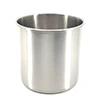
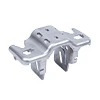
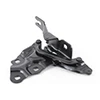
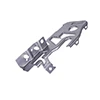
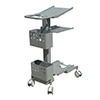


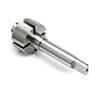
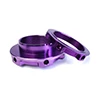

In progressive die stamping, the part is in the metal strip from the beginning to the end until all the features are reached. The process cannot be disconnected or stopped halfway. While in transfer die stamping, the part can be transferred freely and shaped by each die until it is complete.
Progressive die stamping is ideal for small products like terminals, connectors, shields, shrapnel etc in large quantities while transfer die stamping is more suitable for big size part undergo multiple processes, such as shells, frames and structural components.
The production speed of transfer die stamping is much longer because the part will be transferred between different machines by hand or using an automated mechanical transport system. Progressive stamping needs no transferring and all the processes finish in one machine.
If classified according to the degree of combination of different processes, stamping molds can be divided into single punch molds, compound stamping molds, progressive molds, and transfer molds.
1. Single punch mold
Single punch mold refers to a mold that can only complete one stamping process during the working process of a press.
2. Compound mold
In one stroke of the press, the compound die can complete two or more stamping processes simultaneously at the same workstation.
3. Progressive mold
Progressive molds, also known as continuous molds, have two or more workstations and can complete two or more stamping processes at different workstations.
4. Transfer mold
The transfer mold can use a robotic arm for transmission, greatly improving production efficiency, while also reducing manufacturing costs and saving material costs. The transfer mold combines the advantages of single process mold and progressive mold, and has the characteristics of quality, safety, stability, and reliability.
1. A progressive die can complete multiple processes such as punching, bending, forming, and deep drawing. The press can punch one workpiece or several pieces per stroke, thus having higher labor productivity than compound die.
2. The use of progressive die stamping can reduce the number of equipment, molds, and workshop area, saving the transportation and storage of semi-finished products.
3. The progressive mold uses coil or strip materials, and it is easy to achieve automation in feeding, discharging, and stacking. During the stamping process of automated progressive molds, workers do not need to enter hazardous areas, ensuring safe operation.
4. The various processes of the progressive mold are dispersed in various workstations, and there is no problem with the "minimum wall thickness" of the compound mold, so the mold has higher strength and longer lifespan.
5. The progressive mold has complex structure, high manufacturing accuracy, long cycle etc. Though die cost is high but unit price will be very low. Ideal for large quantities.



